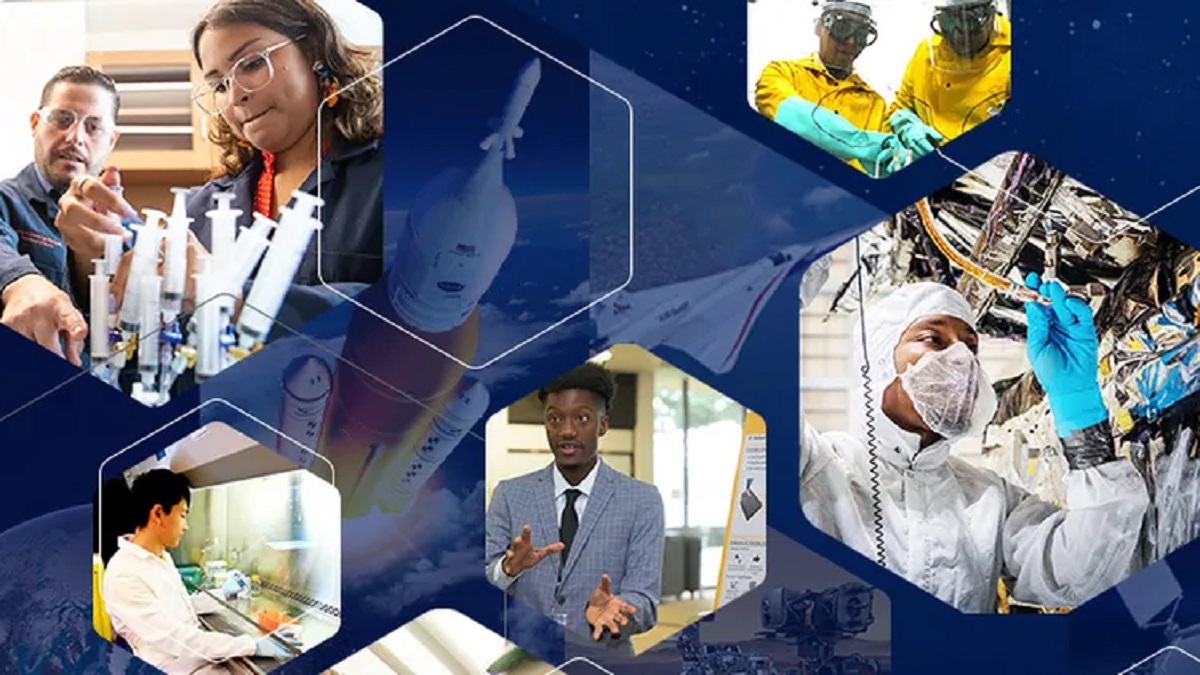In its pursuit of scientific research and human spaceflight, NASA engages in partnerships with various universities, laboratories, and academic institutes. In keeping with NASA’s policy of Diversity, Equity, Inclusion, and Accessibility and the Science Mission Directorate’s (SMD) Science Plan, NASA is seeking to expand its partnerships and encourage “a culture of diversity, inclusion, equity, and accessibility.” To this end, NASA created the Minority University Research and Education Project Partnership (MUREP) – administered through its Office of STEM Engagement (OSTEM).
Through MUREP, NASA provides expert guidance and financial assistance via competitive awards to Minority Serving Institutions (MSIs), which are announced annually through a MUREP Partnership Learning Annual Notification (MPLAN). NASA has teamed up with the leading crowdsourcing platform HeroX for this year’s MUREP opportunity and is awarding multiple prizes of $50,000 to MSIs for innovative ideas and action plans for commercialization that will advance NASA’s Mission Directorate priorities.
Historically, what is generally termed “invisible barriers” have prevented MSIs from engaging in partnerships and collaborations with NASA. The MPLAN aims to reduce these barriers by offering competitive awards to Historically Black Colleges and Universities (HBCUs), Indigenous Tribally-Controlled Colleges and Universities (TCUs), Hispanic-Serving Institutions (HSIs), Asian American and Native American Pacific Islander Serving Institutions (AANAPISIs), Alaska Native-Serving and Native Hawaiian-Serving Institutions (ANNHs) and other institutions representing minority communities across the U.S.

Through participation in these activities, NASA gains valuable insight and ideas from a broader community, while MSIs gain valuable experience that will prepare them for other NASA funding opportunities. This includes NASA’s annual Small Business Innovation Research/Small Business Technology Transfer (SBIR/STTR) solicitation and the NASA University Leadership Initiative. This year’s MUREP will consist of two phases, which will commence with MSI Principle Investigators (PIs) submitting proposals based on topics provided by NASA MUREP and three NASA Mission Directorates.
These include the Space Technology Mission Directorate (STMD), Space Operations Mission Directorate (SOMD), and the Aeronautics Research Mission Directorate (ARMD). The topics they have provided address specific challenges and priorities outlined in NASA’s ‘Moon to Mars” mission architecture, including In-Situ Resource Utilization (ISRU). Some examples include:
- Textiles for Extreme Surface Environments and High Oxygen Atmospheres: Due to the electrostatically-charged nature of lunar regolith (aka. “moondust”), it adheres to spacesuits, causes abrasion, and can muck up machinery when transported back to spacecraft (or habitats). NASA is looking for next-generation textiles that will be used in its Exploration Extravehicular Mobility Unit (xeMU) spacesuits to resist this dust’s “sticky” nature.
- Sustainable Atmospheric Carbon Dioxide Extraction and Transformation: technology that allows for the capture from the Martian atmosphere and converting it into oxygen gas and other useful products for use by astronauts.
- Extended Reality (XR): technology that combines augmented and virtual reality (AR/VR), mixed reality, and hybrid reality technology to provide improved astronaut training, analysis tools, and real-time operations support.
- Lunar and Martian Propellant: technologies related to the production, storage, and usage of cryogenic propellant created from Lunar and Martian resources (i.e., liquid hydrogen, oxygen, and methane).
- Space Radiation: improved research into the effects of solar and cosmic radiation on astronaut health, in particular how it affects the human brain, body, and organ function, how these differ based on sex, and the development of countermeasures.
- Aerospace Spinoffs: ideas that build on NASA’s long history of aeronautical innovation, which has direct applications for the aviation industry and air transportation systems to make it more sustainable and accessible.

The 2023 MUREP officially opened for Phase I submissions on April 11th. It will remain open until May 30th, and the winners will be announced on June 28th. These teams will be able to compete in Phase 2, where NASA will facilitate communication and meetings between the awardees, MUREP and Mission Directorate representatives, and subject matter experts. This phase will run from July to December 2023, and the winning teams will be awarded up to $50,000 to further develop and mature their proposals. They will also have the chance to engage in future collaborations with NASA.
According to the Challenge page, NASA will select winning submissions based on a combination of scientific and technical merit; experience, qualification, and faculties; and feasibility and reasonableness. In particular, NASA is looking for “proposals that offer the most advantageous research and development (R&D), deliver technological innovation that contributes to NASA’s missions, provides societal benefit, and grows the U.S. economy. In evaluating proposals, NASA prioritizes the scientific and technical merit of the proposal, as well as its feasibility and potential benefit to NASA’s interests.”
To learn more, check out the competition’s Eligibility and Rules page.
Further Reading: HeroX

